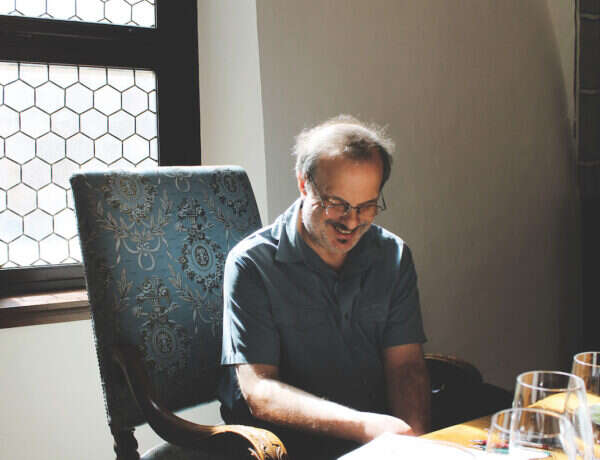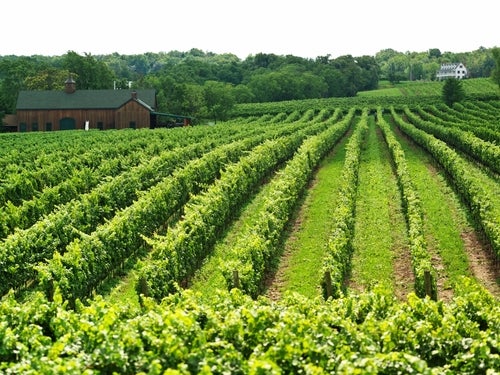
For a number of years, now, The World of Fine Wine has published a wide-ranging end-of-year essay by Terry Theise, in which the inimitable US merchant-turned-author reflects on his past year with wine. This year’s contribution, available to subscribers in its full glory in the just-published Issue 74 of The World of Fine Wine, addresses the strangeness of tasting wine in a year when, as Theise puts it, “the pandemic helped to make at-home a steady state.”
In this extract—which kicks off a series of pieces from WFW contributors reflecting on the bottles that shaped their year with wine—Theise reflects on a very special (too special?) Riesling from the great Nahe producer, Dönnhoff.
It hasn’t been a year for big ideas. It’s been a year for rumination, for the pensive working over of a host of small, compelling ideas. The pandemic helped to make at-home a steady state, and home has always been a locus of reverie and of a relaxed interiority. I have also been tasting at home, in conditions I never could access in my mercantile life.
One thing I’ve been thinking this year is, almost no one ever writes about the conditions under which they tasted. I’d actually like to know that. Was it a day when they tasted a lot? Did they taste in the morning and then after eating lunch? Which wines were which? How was the weather, how warm was the room, was it natural or artificial light? And most saliently: What glass(es) did they use? Because we actually do not know how a wine tastes; we only know how it tastes from the glass we happened to use. This year I’ve started tasting with several different stems for each wine, which reinforces my unease. Clearly, pursuing this idea can make you crazy, and the only through-thread I can find is to scrape out some commonality of identity that emerges from the variousness.
To personify it, one might say, “He looks great in that color and okay in this color but he really looks shitty in that other color….” And while this may be true, it is still him beneath it all. But if you have to describe him, you’re stuck saying how he looked in the color he wore that day. Is this acceptable as a standard for criticism?
Would you be comfortable reviewing a film you watched on your ordinary-sized TV screen? You’d receive the content, yes, but not the cinema. Mind you, I am not eager to become wine-glass-nerd-boy, and I only keep a few variants at home, but we really need to address this issue. While we’re at it, it would be useful to consider wine as it “performs” in the tasting room versus how it drinks with a meal. This is a well-worn topic, but when was the last time you read a reviewer who said “The wine has some issues while tasting it, but it was actually really nice with our supper that evening?” The tasting room only seems like a complete universe, you know.
Can a wine be too good?
Another question I’ve been pondering is, can a wine be too good? I suppose the simple answer is, too good for what? And then I guess, for the purpose we intended to put it to. The bottle giving rise to these speculations is a 2006 Dönnhoff—there’s a big surprise!—Norheimer Kirschheck Riesling Spätlese. We opened one a few nights ago. I have a few of Dönnhoff’s ’06s in the cellar, as a consolation prize for shamefully missing out on the ’05s, and since I’m in no great hurry to drink Dönnhoff’s wines, which age beautifully and deliberately, this was my first encounter since tasting the wine in its infancy.
As a rule, the 2006s are what I’d call rough-and-ready. It was a ripe, opulent vintage and the wines either show sometimes-obtrusive botrytis or they’ve faded finely into the flavor of soft, overripe persimmons. It’s an outlier vintage, not a classic one.
The first whiff was transporting. (The empty but not rinsed bottle sits next to me as I write, and even after 72 hours there’s no decay, no acetification.) I took the first glass outside to share with the juncos and crocuses who have set up camp in our little yard.
Now I know, I have spent (squandered?) many, many words on the curious existential life of these singular wines, and I’ll resist doing so here. Probably fruitlessly, but still. When I took the first sip it was clear, this was nothing other than ur-Riesling, seeming to calmly breathe an essence of the variety; it gave me an image of the world before there were people, before thoughts that knew they were thoughts. Nor did the wine feel in any way separate from me. Even with good (and even great) wines you feel they are companions, maybe even friends, but it is the two of you. Not now. This wine simply and effortlessly enveloped me, absorbed me, and quieted me down—quieted everything down. I tried like hell to think about the wine, to grok its flavors, its Flavor, its structures and dialogues and the many arcs of its sheer activity. That only worked somewhere in the second glass, as the sensuous spell relaxed.
Sit with a bottle and dream
A meal was being cooked and would soon be eaten. The wine would fulfill its quotidian purpose, to wash down our dinner with as many gestures of harmony as the pairing engendered. But with this wine, I felt it was somehow being wasted on mere food. It wanted more white space around it, a lot more. The Italians have their lovely phrase Vino di Meditazione, but how often do we actually just sit with a bottle and dream? I’m about as willing as anyone to do that, but life and its businesses intrudes. I also wonder whether Dönnhoffs themselves would agree that a wine like this one ought to stand apart. Helmut is more “poetic” than his son Cornelius, but I suspect even he would feel a little sad that some of his wines seem to require solitude.
So, we stand on the shore of a riddlesome question: What are such wines actually for? Are they too good for the normal occasions of a bottle of wine? And if this is so, is there a risk such wines would seem to be too precious? I’d hate to think so, and yet I also doubt that the dinner table is a place for reverie. And reverie is what this wine embodies, and what it gives to us. Perhaps there’s a middle ground, one in which we offer the wine the ceremony it asks for, in return for its retreating modestly when it comes time to eat. That was what I hoped for, yet each sip of the wine I took with my dinner seemed to be misspent, because flavors do not travel alone; they bring with them wild hosts of thoughts, feelings, and images, and we need a certain quiet around them or they will be drowned out.
More in this series
Stuart Walton: My dinner with Brunello di Montalcino
Andrew Jefford: Bacchus in Riga
Jim Clarke: Bluet, Maine’s sparkling blueberry wine
Francis Percival: Thévenet in time
Joanna Simon: The lost Gewurztraminer
Simon Field MW: Krug Clos du Mesnil sparkles in Sweden






